Gay Lynch reviews “A Chinese Affair” by Isabelle Li
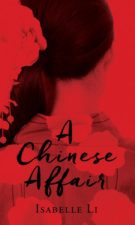 A Chinese Affair
A Chinese Affair
by Isabelle Li
ISBN 9780994316769
Reviewed by GAY LYNCH
In 2016, I met short story writer and poetry translator Isabelle Li at the inaugural Australian Short Story Festival in Perth. In conversation she conveys a graceful attentiveness. She tells me that she values the Chinese artistic tradition of training and craftsmanship and hopes her debut collection of stories will appeal to a broad readership.
Several are focalised through Crystal [Xueqing], an adult Chinese expatriate living in Sydney and her child persona, who convey the intergenerational trauma brought about by the Cultural Revolution. Crystal morphs into a minor character in one story and is renamed in others. Like Li, these young women take their hard-won education and migrate, to Singapore, London and Australia. Their psychological perspicuity and bold cleverness enliven the text:
I can afford to be controversial. I can blink my almond-shaped eyes and make provocative statements to people’s faces. I once said over family dinner, ‘The world is made of strings of energy. A brick and I are made of the same elements. The strings vibrate differently to form different particles’ (8).
Several of them have a yen to write creatively. Li confesses to her Perth audience that many of her stories are semi-autobiographical.
A Chinese Affair is structured in four sections, each containing four stories, some of them continuous or linked, many set in China, the first and last bookending Sydney. The action shifts back and forth between these places, traversing the psychological and physical journeys of the characters. Li’s writing is evocative. Sea, sky and weather adjust narrative tension: ‘The air is damp and heavy, the moon is hiding behind a cloud. The wind chime too makes a timid sound, as if it too is afraid to break the silence’ (14); ‘the sky is still fish-belly white and the clouds scaly silver’ (303); Stories are framed by nature and seasons that convey mood and foreshadow events: ‘everyone’s anxious, waiting for the tempest’ (304).
The authorial voice in A Chinese Affair is somber, questing and humble. Key characters are soft and tough.
…in a Chinese costume, which makes me feel like a porcelain vase, exquisite and brittle, to be treated with care, by others and myself’ (7)
I do not want to be special. I am not an exotic bird and have no interest in showing off my plumage. I am Crystal, perfect in structure and form, hard and clear in every molecule (105).
These images carry the dignity and restraint of their creator.
In the title story, ‘A Chinese Affair’, a Mandarin interpreter married to an older Australian man who has ‘had the snip’, seems resigned to her fate but, nevertheless, pursues IVF. Many of Li’s protagonists long for a child. After visiting home in China, Crystal experiences depression. Her husband advises her to listen to rock music, arguing that there ‘is nothing to get angry about in his society’ and that her sense of dislocation is ‘a Chinese affair’ (9). The reader will be aware that ‘affair’ has at least two meanings and that homesickness is a double-edged sword.
The stories are well paced rather than relentlessly action-packed. Most turn on a dramatic event: a diabetic coma, a murder, a betrayal. Li relates to the Perth conferees how every afternoon during the second school sitting – she attended morning sessions – she listened to radio and read and rote-learned poetry, locked behind a barred wooden door for safety, in a violent neighborhood. Her collection is well balanced, with passages of introspection and rapid descents into chilling backstories.
Common subjects and themes pervade the texts, throwing light upon a Chinese historical need for discipline, to survive great trials and threats of violence, to find the courage to leave, to achieve good mìngyùn/ fortune. Characters meditate on education, the art of love and fertility, exile and loneliness, violence and ambition. They have the kind of industry necessary to write one letter each week, 208 letters before joining the army, or to house sit and finance a portfolio of shares or a block of land in the Blue Mountains.
Gender inequity simmers below the surface of many stories. But suffering is dealt out evenhandedly between girls and boys. In ‘A Fishbone in the Throat’, the only story told entirely from a male perspective, Li offers a western role reversal with Chinese economy, when a husband loses his job as a fitness coach and teacher, becomes a cleaner and suffers heart disease. His wife berates him about cigarettes, alcohol and cholesterol. Ironically she escapes to Australia as a refugee after government persecution for her practice as a member of Falung Gong. Li’s women suffer stoically–taking on domestic work as well as big careers, aspiring to help their children leave. Contemporary expat partners tend to be supportive even when culturally perplexed. Women ignore or enact infidelities.
‘Further South’ addresses domestic violence. It could be argued that family violence occurs everywhere, along with corporal punishment, self-harm, adultery and incest, rape and assault, kidnapping, suicide and femicide. Li suggests, perhaps, that Chinese history exacerbates it. Many stories refer, sometimes obliquely, to horrible violence, springing from injustices and cruelty during the Cultural Revolution, reconstructed from Li’s memory of that time: for instance, a boy beaten to death, frozen, dumped next to a pile of Chinese cabbage; a teenage lover who meets a similar fate. Li paints a grim picture of injuries caused by manual labour in heavy industry and the consequences of socialised medicine and poverty.
The child voice in ‘Fountain of Gratitude’ and in other stories affords Li a construction to contain universal childish activities – climbing trees, turning cartwheels, sucking nectar from flowers, catching dragonflies, collecting birds eggs, making slingshots and pancakes, riding bicycles, eating sunflower seeds, acting out television series and ice skating. Set against the hardship of a Japanese invasion in which the fictional child narrator’s father was killed, the narrative presents efflorescent violence more pervasive than the child’s capacity to comprehend or articulate. But Li’s juxtaposition of innocence against violence is deftly done, offering readers none of the irritations of twee-ness, precocity or maudlin victimhood brought by some writers. Dark forces – occasionally understated – dislocate the rhythms of Chinese childhoods. Little Third suffers blow after blow until he disappears at the end of ‘The Floating Fragrance’. Li describes a mother’s hanging corpse ‘facing the wall, like a set of clothes dangling from a hook. Her right hand was in front of my eyes, small, smooth, yellowish, as if she is wearing a rubber glove’ (130).
At the conclusion of ‘Blue Lotus’, this titular flower is described as ‘a symbol of hope, of perseverance’ (126). The human discipline required to survive historical Chinese violence and material deprivation, falls into striking relief against Li’s depiction of Sydney dinner guests discussing ‘the perfect cup of coffee and lamenting the hardship of finding one’ (123). The narrator is disoriented by their comparative decadence: ‘As if walking in a snowstorm, I look back to find my footprints have been erased. I do not know where I am and can no longer find my way back’ (123).
In ‘Two Tongues’, the book’s final story, a poet suggests that ‘exile is not a subject on its own but a state of existence whence all poetry arises’ (318). Li applies metafiction to Crystal’s riffs on translation as an income source that leaves a writer free to write their past and to settle their aesthetic. The enlarging of sympathy in trying to understand another point of view sharpens acuity and skill. Memory and translation can commingle or diverge: ‘translation is like a woman, either faithful or beautiful, but not both’ (330). Li’s narrative sparkles with wit and energy and the narrative ends on a happy note. Perhaps love may be possible. In ‘Narrative of Grief’, researcher Lili hypothesises that ‘the very act of writing will change the nature of memory’ (275).
‘Amnesia’ is the only story in which I found language overblown, some of it cliched and self-consciously straining for effect but, in such a good collection, I might pass this off as characterisation. Olivia is ‘highly synaesthetic’ and mediating on grief with an analyst who, unprofessionally, stalks her and lusts after her during consultations. She seems close to psychosis: ‘I want to sail towards you in the black sea’ (195). The narrative is unreliably focalised through the young therapist and features Gothic undertones.
Li’s stories will hold wide appeal for general readers but especially for those interested in the effect of trauma on memory. Millennial readers may find the protagonists’ resignation and courage inspiring, particularly in stories like ‘Lyrebird’. In an age of global migration Li’s redemptive stories hold up a beacon of hope to those longing for a safer, happier future. The Chinese Londoner counsellor in ‘Narrative of Grief’ laments that ‘There are many who do not want to share their stories for fear of losing them’ (273). Li is not among them.
GAY LYNCH is a creative writing academic, working adjunct to Flinders University. She has published academic papers, Cleanskin, a novel (2006) and short stories: most recently, in Griffith Review (2016), Best Australian Stories 2015, TEXT (2015), and Sleepers Almanac: 8, 10 (2013, 2015). Two pieces of life writing are pending (2017). She was Fiction and Life Writing editor at Transnational Literature ejournal from 2011-2015. Her historical novel is presently being read by Picador.
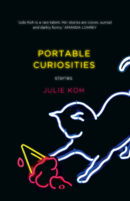 Portable Curiosities
Portable Curiosities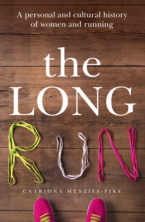 The Long Run
The Long Run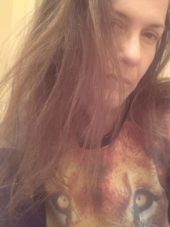 Anne Walsh is a poet and a story writer. Her work has been published widely in print and online. She has been shortlisted for the Newcastle Poetry Prize twice and for the ACU Prize for Literature. Her first collection of poems, I Love Like a Drunk Does, was published by Ginninderra Press (2009, Australia). Her work has also been published in the U.S., including a short story, ‘The Rickman Digression’, by Glimmer Train. Her second book of poems, Intact, is forthcoming with Flying Island Press.
Anne Walsh is a poet and a story writer. Her work has been published widely in print and online. She has been shortlisted for the Newcastle Poetry Prize twice and for the ACU Prize for Literature. Her first collection of poems, I Love Like a Drunk Does, was published by Ginninderra Press (2009, Australia). Her work has also been published in the U.S., including a short story, ‘The Rickman Digression’, by Glimmer Train. Her second book of poems, Intact, is forthcoming with Flying Island Press. Paul Munden is Postdoctoral Research Fellow at the University of Canberra, where he is also Program Manager for the International Poetry Studies Institute (IPSI). He is General Editor of Writing in Education and Writing in Practice, both published by the National Association of Writers in Education (NAWE), of which he is Director. He has worked as conference poet for the British Council and edited Feeling the Pressure: poetry and science of climate change (British Council, 2008). His collections include Analogue/Digital (Smith|Doorstop, 2015) and The Bulmer Murder (Recent Work Press 2017). A new collection, Fugue, will be published by UWAP in October.
Paul Munden is Postdoctoral Research Fellow at the University of Canberra, where he is also Program Manager for the International Poetry Studies Institute (IPSI). He is General Editor of Writing in Education and Writing in Practice, both published by the National Association of Writers in Education (NAWE), of which he is Director. He has worked as conference poet for the British Council and edited Feeling the Pressure: poetry and science of climate change (British Council, 2008). His collections include Analogue/Digital (Smith|Doorstop, 2015) and The Bulmer Murder (Recent Work Press 2017). A new collection, Fugue, will be published by UWAP in October. Darren C. Demaree is the author of six poetry collections, most recently Many Full Hands Applauding Inelegantly (2016, 8th House Publishing).
Darren C. Demaree is the author of six poetry collections, most recently Many Full Hands Applauding Inelegantly (2016, 8th House Publishing).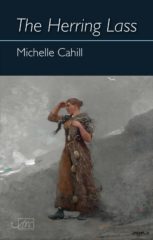 The Herring Lass
The Herring Lass The Historian’s Daughter
The Historian’s Daughter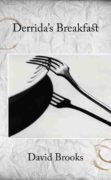 Derrida’s Breakfast
Derrida’s Breakfast  Owen Bullock is a PhD Candidate in Creative Writing at the University of Canberra. His publications include
Owen Bullock is a PhD Candidate in Creative Writing at the University of Canberra. His publications include